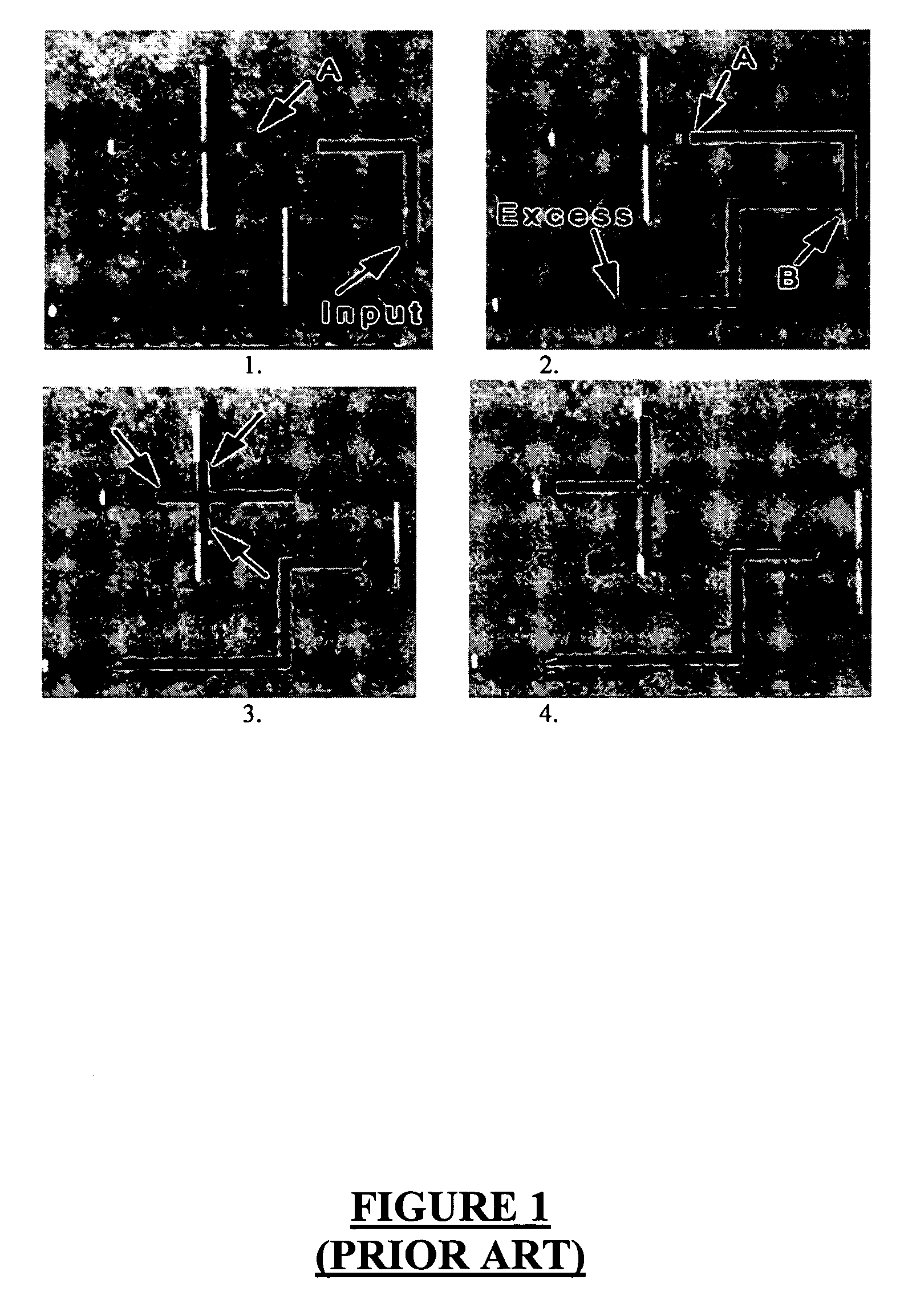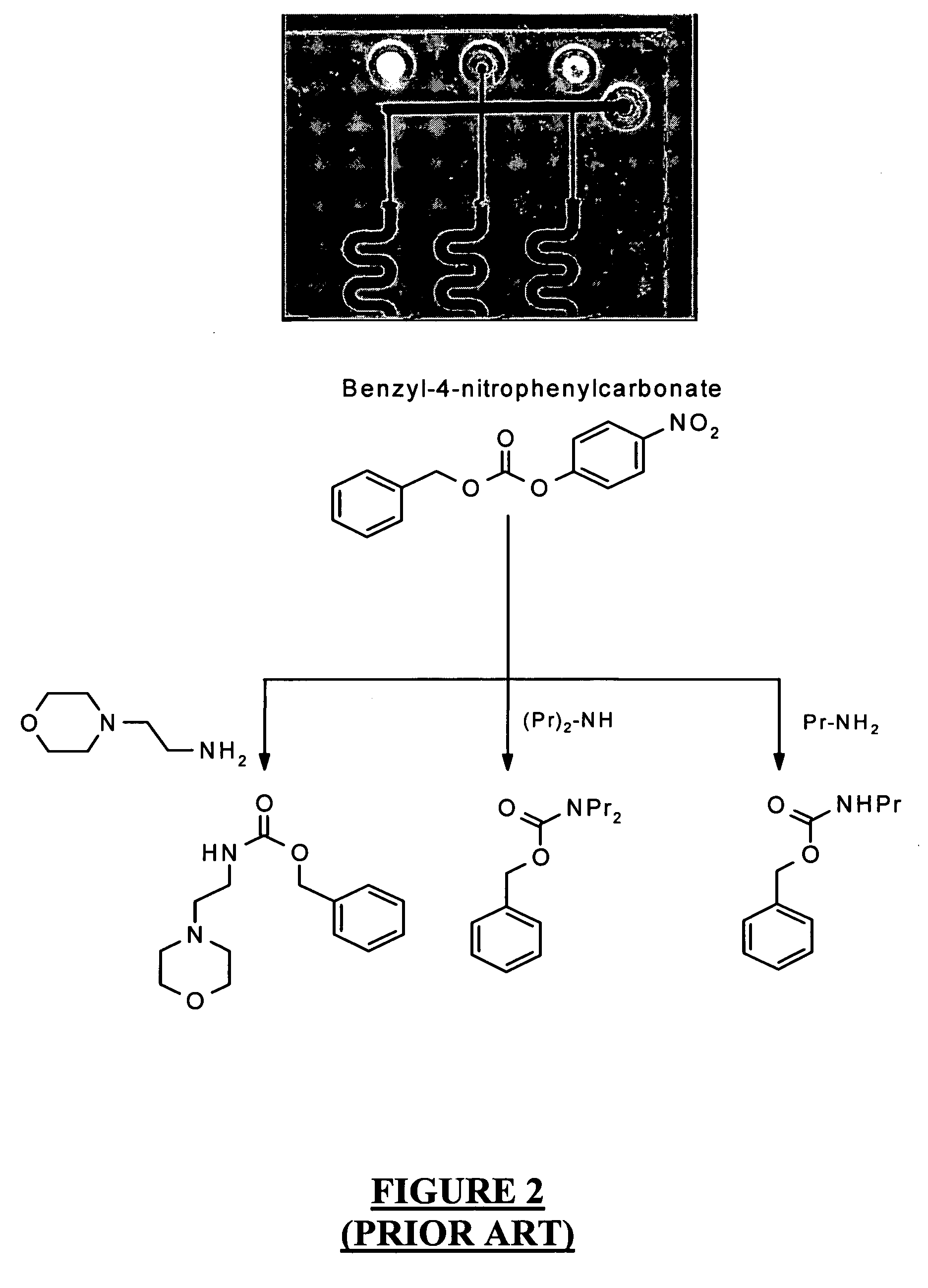Method and a system to dispense and detect fluorescent quantum dots
- Summary
- Abstract
- Description
- Claims
- Application Information
AI Technical Summary
Benefits of technology
Problems solved by technology
Method used
Image
Examples
Embodiment Construction
The present invention relates to a technology that combines fluorescent QDs and methods to dispense and detect them for a range of optical tagging applications. In the following description, numerous specific details are set forth to provide a more thorough description of embodiments of the invention. It is apparent, however, to one skilled in the art, that the invention may be practiced without these specific details. In other instances, well known features have not been described in detail so as not to obscure the invention.
Basic Schematic
The basic schematic of the present technology is shown in FIG. 4. Optical tag 420 composed of many fluorescent QDs is disposed on the surface of medium 410 that needs protection. When UV illumination 400 is turned on, the optical tag 420 fluoresces. Optical spectrometer 440 analyzes the fluorescent emission 430 representing the passive fingerprint of the tag. According to one embodiment, medium 410 is made up of an embossed material. The emb...
PUM
 Login to View More
Login to View More Abstract
Description
Claims
Application Information
 Login to View More
Login to View More - R&D
- Intellectual Property
- Life Sciences
- Materials
- Tech Scout
- Unparalleled Data Quality
- Higher Quality Content
- 60% Fewer Hallucinations
Browse by: Latest US Patents, China's latest patents, Technical Efficacy Thesaurus, Application Domain, Technology Topic, Popular Technical Reports.
© 2025 PatSnap. All rights reserved.Legal|Privacy policy|Modern Slavery Act Transparency Statement|Sitemap|About US| Contact US: help@patsnap.com



